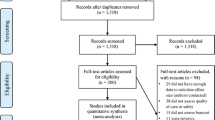Abstract
Physician burnout and its association with the use of electronic health records (EHRs) is well known. The impact of scribes for academic dermatologists and their patients needs to be explored. As physician burnout increases, system-based solutions are needed. To assess the impact of a scribe on physician and patient satisfaction at an academic dermatology clinic. Prospective, pre-post-pilot intervention study. During the pilot intervention, clinicians had clinic sessions with and without a scribe. We assessed changes in (1) clinician satisfaction and burnout, (2) time spent on EHR, and (3) patient satisfaction. An electronic 7-item baseline survey, 23-item mid-study survey, and a 22-item end-of-study survey to assess clinician burnout and feedback on satisfaction with medical scribes. A 19-item post visit satisfaction survey was given to patients. EHR was queried to compare amount of time spent on EHR, closure of charts, and number of patients seen during scribe coverage and at baseline. Of the six clinicians, 100% felt that there was value to scribe support. Physician burnout was low at baseline and did not change post-pilot. Active documentation time, on average, decreased by 67% per patient with a 28% increase in patients seen per clinic. Over 88% of patients disagreed with the statement, “I was uncomfortable disclosing personal information when a scribe was present” (p < 0.001). In an academic dermatology and Mohs surgery setting, medical scribes increased clinician satisfaction without compromising patient satisfaction.


Similar content being viewed by others
References
West CP, Dyrbye LN, Shanafelt TD (2018) Physician burnout: contributors, consequences and solutions. J Intern Med 283(6):516–529
Azam K, Khan A, Alam MT (2017) Causes and adverse impact of physician burnout: a systematic review. J Coll Physicians Surg Pak 27(8):495–501
Trockel M, Bohman B, Lesure E et al (2018) A brief instrument to assess both burnout and professional fulfillment in physicians: reliability and validity, including correlation with self-reported medical errors, in a sample of resident and practicing physicians. Acad Psychiatry 42(1):11–24
Dorrell DN, Feldman SR, Huang WW (2019) The most common causes of burnout among US academic dermatologists based on a survey study. J Am Acad Dermatol 81(1):269–270
Bank AJ, Gage RM (2015) Annual impact of scribes on physician productivity and revenue in a cardiology clinic. Clinicoecon Outcomes Res 7:489–495
Bank AJ, Obetz C, Konrardy A et al (2013) Impact of scribes on patient interaction, productivity, and revenue in a cardiology clinic: a prospective study. Clinicoecon Outcomes Res 5:399–406
Pozdnyakova A, Laiteerapong N, Volerman A et al (2018) Impact of medical scribes on physician and patient satisfaction in primary Care. J Gen Intern Med 33(7):1109–1115
Nambudiri VE, Watson AJ, Buzney EA, Kupper TS, Rubenstein MH, Yang FC (2018) Medical scribes in an academic dermatology practice. JAMA Dermatol 154(1):101–103
Kristensen TS, Borritz M, Villadsen E, Christensen KB (2005) The Copenhagen burnout inventory: a new tool for the assessment of burnout. Work Stress 19(3):192–207
Harris PA, Taylor R, Thielke R, Payne J, Gonzalez N, Conde JG (2009) Research electronic data capture (REDCap)–a metadata-driven methodology and workflow process for providing translational research informatics support. J Biomed Inform 42(2):377–381
Earls ST, Savageau JA, Begley S, Saver BG, Sullivan K, Chuman A (2017) Can scribes boost FPs’ efficiency and job satisfaction? J Fam Pract 66(4):206–214
Resneck JS Jr, Tierney EP, Kimball AB (2006) Challenges facing academic dermatology: survey data on the faculty workforce. J Am Acad Dermatol 54(2):211–216
Melnick ER, Dyrbye LN, Sinsky CA et al (2020) The Association between perceived electronic health record usability and professional burnout among US physicians. Mayo Clin Proc 95(3):476–487
Kroth PJ, Morioka-Douglas N, Veres S et al (2019) Association of Electronic Health Record Design and Use Factors With Clinician Stress and Burnout. JAMA Netw Open 2(8):e199609
Funding
Use of REDCap through Penn State is supported by NIH/NCATS Grant Number UL1 TR000127 and UL1 TR002014 through The Penn State Clinical & Translational Research Institute, Pennsylvania State University CTSA.
Author information
Authors and Affiliations
Corresponding author
Ethics declarations
Conflict of interest
None declared.
Ethical approval
This study was reviewed and approved by the Penn State IRB. All subjects provided informed consent prior to participation.
Additional information
Publisher's Note
Springer Nature remains neutral with regard to jurisdictional claims in published maps and institutional affiliations.
Rights and permissions
About this article
Cite this article
Lam, C., Shumaker, K., Butt, M. et al. Impact of medical scribes on physician and patient satisfaction in dermatology. Arch Dermatol Res 314, 71–76 (2022). https://doi.org/10.1007/s00403-021-02206-1
Received:
Revised:
Accepted:
Published:
Issue Date:
DOI: https://doi.org/10.1007/s00403-021-02206-1




